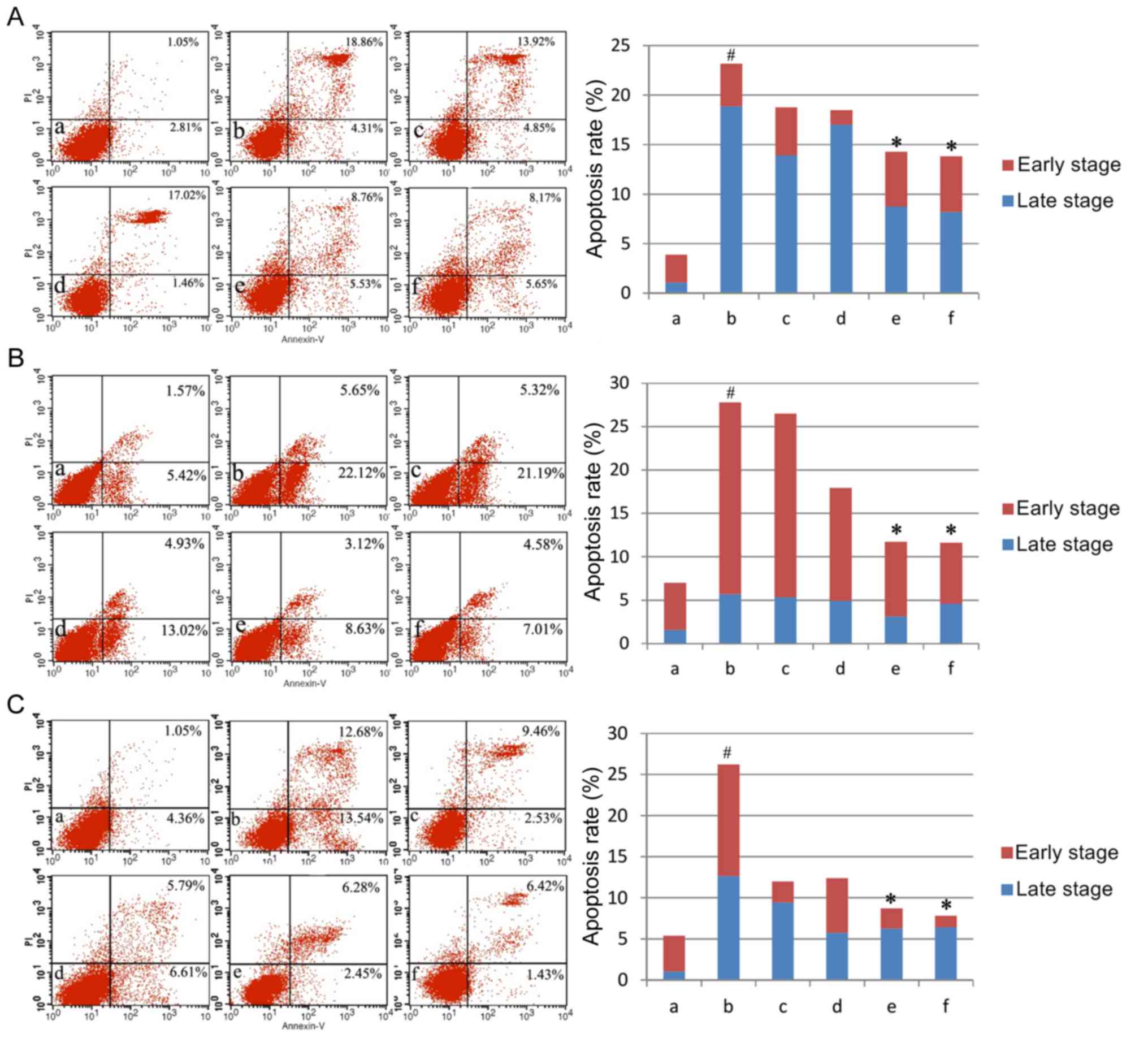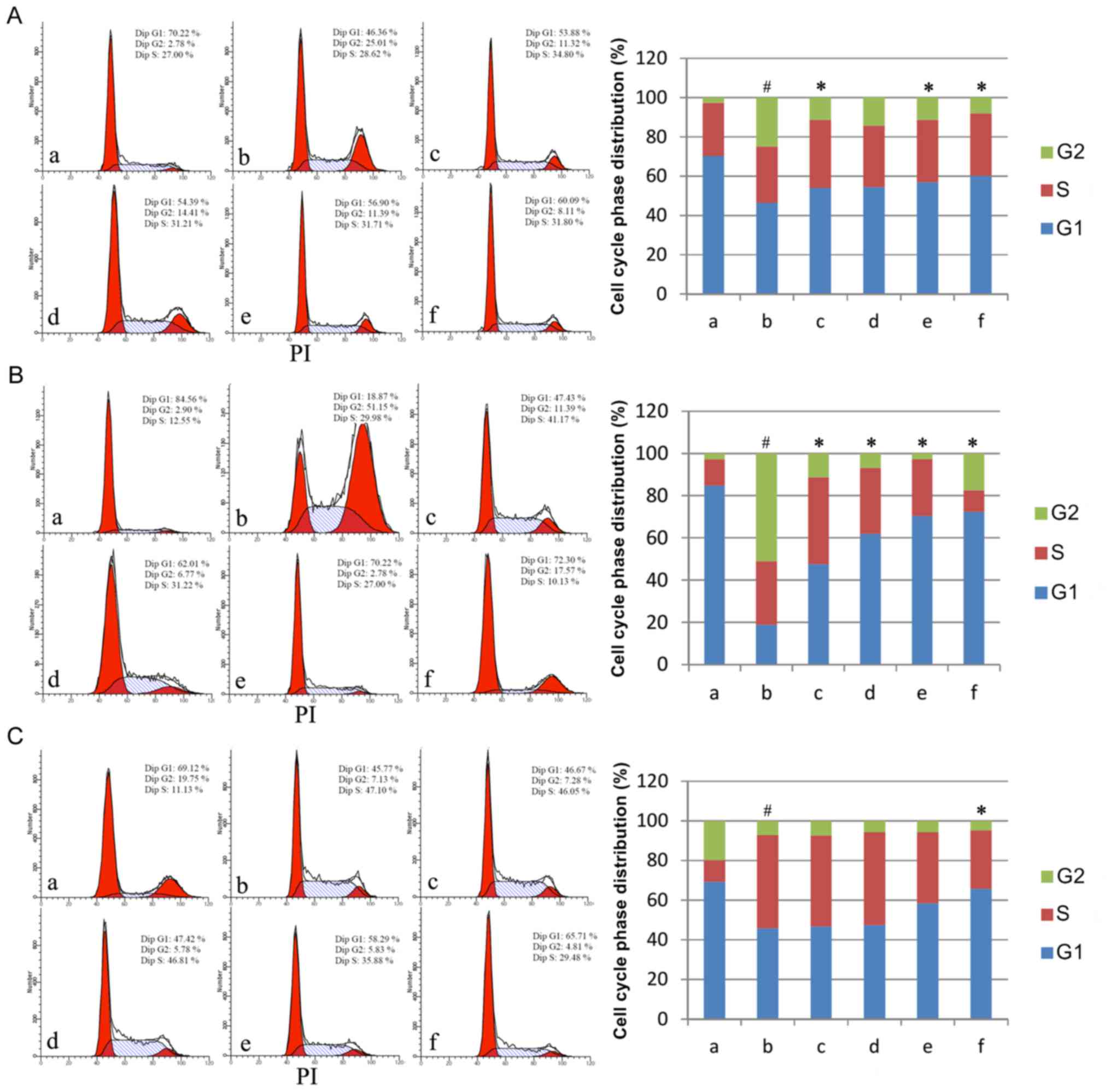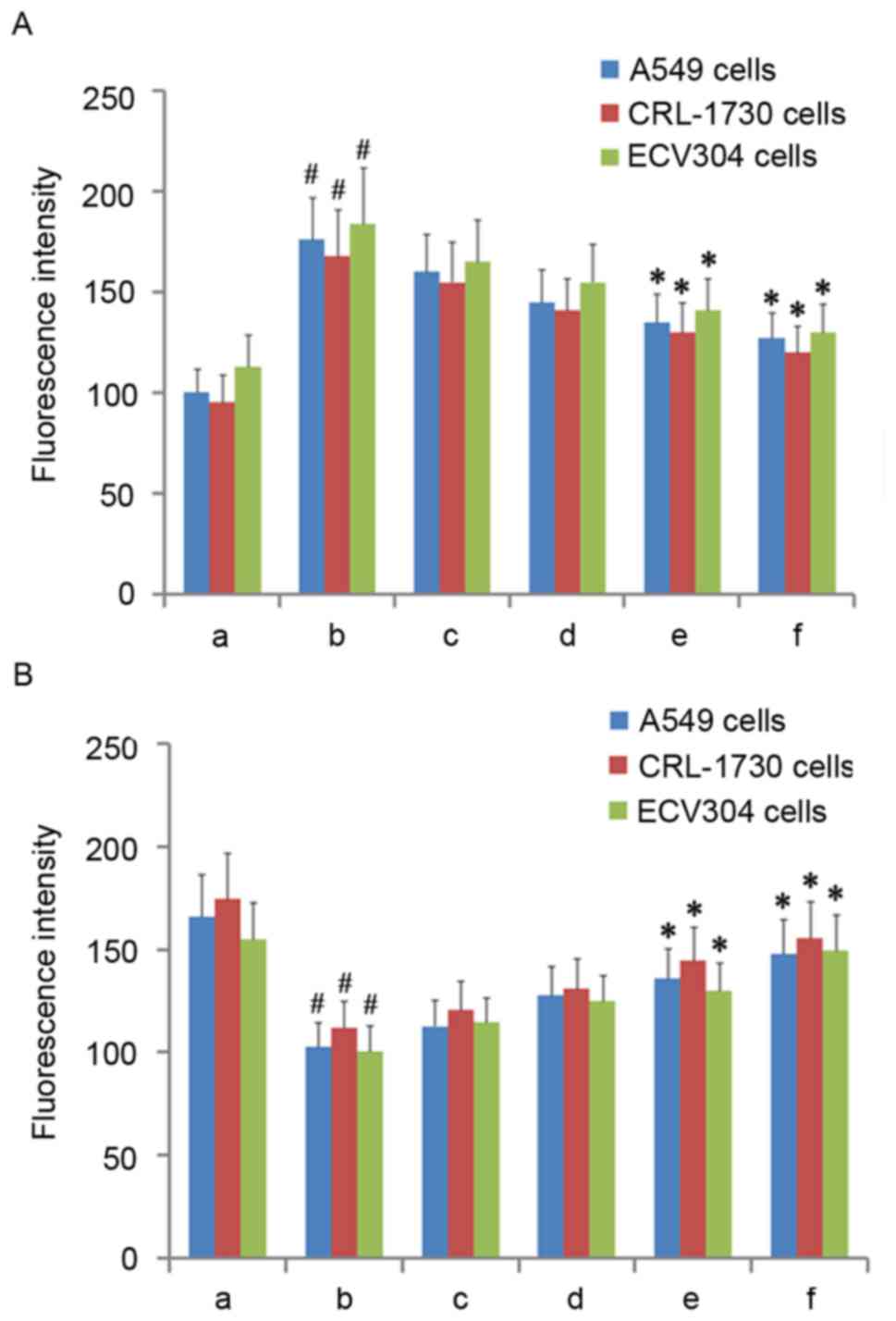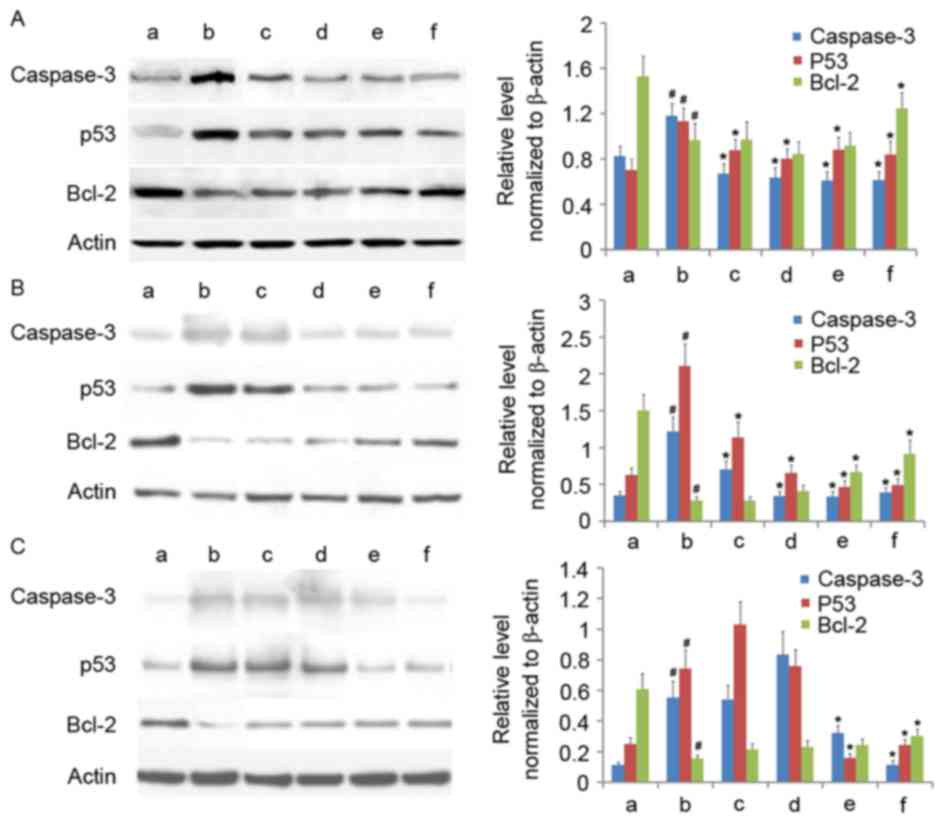|
1
|
Fu J, Wang Z, Huang L, Zheng S, Wang D,
Chen S, Zhang H and Yang S: Review of the botanical
characteristics, phytochemistry, and pharmacology of Astragalus
membranaceus (Huangqi). Phytother Res. 28:1275–1283. 2014.
View Article : Google Scholar : PubMed/NCBI
|
|
2
|
Zhang HW, Lin ZX, Xu C, Leung C and Chan
LS: Astragalus (a traditional Chinese medicine) for treating
chronic kidney disease. Cochrane Database Syst Rev.
22:CD0083692014.
|
|
3
|
Ma XQ, Shi Q, Duan JA, Dong TT and Tsim
KW: Chemical analysis of Radix Astragali (Huangqi) in China: A
comparison with its adulterants and seasonal variations. J Agric
Food Chem. 50:4861–4866. 2002. View Article : Google Scholar : PubMed/NCBI
|
|
4
|
Li X, Chen D, Mai Y, Wen B and Wang X:
Concordance between antioxidant activities in vitro and chemical
components of Radix Astragali (Huangqi). Nat Prod Res.
26:1050–1053. 2012. View Article : Google Scholar : PubMed/NCBI
|
|
5
|
Wu HW, Fang J, Tang LY, Lu P, Xu HY, Zhao
Y, Li DF, Fu MH and Yang HJ: Quality evaluation of astragali radix
based on DPPH radical scavenging activity and chemical analysis.
Chin Herbal Med. 6:282–289. 2014. View Article : Google Scholar
|
|
6
|
Jiao J, Gai QY, Fu YJ, Ma W, Peng X, Tan
SN and Efferth T: Efficient production of isoflavonoids by
Astragalus membranaceus hairy root cultures and evaluation of
antioxidant activities of extracts. J Agric Food Chem.
62:12649–12658. 2014. View Article : Google Scholar : PubMed/NCBI
|
|
7
|
Wang Y, Wang GZ, Rabinovitch PS and Tabas
I: Macrophage mitochondrial oxidative stress promotes
atherosclerosis and nuclear factor-κB-mediated inflammation in
macrophages. Circ Res. 114:421–433. 2014. View Article : Google Scholar : PubMed/NCBI
|
|
8
|
Müller JM, Ziegler-Heitbrock HL and
Baeuerle PA: Nuclear factor kappa B, a mediator of
lipopolysaccharide effects. Immunobiology. 187:233–256. 1993.
View Article : Google Scholar : PubMed/NCBI
|
|
9
|
MacLeod RA, Dirks WG, Matsuo Y, Kaufmann
M, Milch H and Drexler HG: Widespread intraspecies
cross-contamination of human tumor cell lines arising at source.
Int J Cancer. 83:555–563. 1999. View Article : Google Scholar : PubMed/NCBI
|
|
10
|
Scharstuhl A, Mutsaers HA, Pennings SW,
Russel FG and Wagener FA: Involvement of VDAC, Bax and ceramides in
the efflux of AIF from mitochondria during curcumin-induced
apoptosis. PLoS One. 4:e66882009. View Article : Google Scholar : PubMed/NCBI
|
|
11
|
Arora S, Bhardwaj A, Srivastava SK, Singh
S, McClellan S, Wang B and Singh AP: Honokiol arrests cell cycle,
induces apoptosis, and potentiates the cytotoxic effect of
gemcitabine in human pancreatic cancer cells. PLoS One.
6:e215732011. View Article : Google Scholar : PubMed/NCBI
|
|
12
|
Zhang DY, Wang HJ and Tan YZ:
Wnt/β-catenin signaling induces the aging of mesenchymal stem cells
through the DNA damage response and the p53/p21 pathway. PLoS One.
6:e213972011. View Article : Google Scholar : PubMed/NCBI
|
|
13
|
Zhang S, Zhang Y, Zhuang Y, Wang J, Ye J,
Zhang S, Wu J, Yu K and Han Y: Matrine induces apoptosis in human
acute myeloid leukemia cells via the mitochondrial pathway and Akt
inactivation. PLoS One. 7:e468532012. View Article : Google Scholar : PubMed/NCBI
|
|
14
|
Scotland RL, Allen L, Hennings LJ, Post GR
and Post SR: The ral exchange factor rgl2 promotes cardiomyocyte
survival and inhibits cardiac fibrosis. PLoS One. 8:e735992013.
View Article : Google Scholar : PubMed/NCBI
|
|
15
|
Cao J, Liu Y, Jia L, Zhou HM, Kong Y, Yang
G, Jiang LP, Li QJ and Zhong LF: Curcumin induces apoptosis through
mitochondrial hyperpolarization and mtDNA damage in human hepatoma
G2 cells. Free Radic Biol Med. 43:968–975. 2007. View Article : Google Scholar : PubMed/NCBI
|
|
16
|
Ray PD, Huang BW and Tsuji Y: Reactive
oxygen species (ROS) homeostasis and redox regulation in cellular
signaling. Cell Signal. 24:981–990. 2012. View Article : Google Scholar : PubMed/NCBI
|
|
17
|
Hekimi S, Lapointe J and Wen Y: Taking a
‘good’ look at free radicals in the aging process. Trends Cell
Biol. 21:569–576. 2011. View Article : Google Scholar : PubMed/NCBI
|
|
18
|
Jin M, Zhao K, Huang Q and Shang P:
Structural features and biological activities of the
polysaccharides from Astragalus membranaceus. Int J Biol Macromol.
64:257–266. 2014. View Article : Google Scholar : PubMed/NCBI
|
|
19
|
Carocho M and Ferreira IC: A review on
antioxidants, prooxidants and related controversy: Natural and
synthetic compounds, screening and analysis methodologies and
future perspectives. Food Chem Toxicol. 51:15–25. 2013. View Article : Google Scholar : PubMed/NCBI
|
|
20
|
Yang WJ, Li DP, Li JK, Li MH, Chen YL and
Zhang PZ: Synergistic antioxidant activities of eight traditional
Chinese herb pairs. Biol Pharm Bull. 32:1021–1026. 2009. View Article : Google Scholar : PubMed/NCBI
|
|
21
|
Li P, Zhao QL, Wu LH, Jawaid P, Jiao YF,
Kadowaki M and Kondo T: Isofraxidin, a potent reactive oxygen
species (ROS) scavenger, protects human leukemia cells from
radiation-induced apoptosis via ROS/mitochondria pathway in
p53-independent manner. Apoptosis. 19:1043–1053. 2014. View Article : Google Scholar : PubMed/NCBI
|
|
22
|
Sharma DR, Sunkaria A, Verma D and Gill
KD: Quercetin attenuates aluminum-induced apoptosis in rat
hippocampus, by preventing cytochrome c translocation, Bcl-2
decrease, bax elevation, caspase-3 and p53 activation. Free Radical
Biol Med. 53:S44–S45. 2012. View Article : Google Scholar
|
|
23
|
Gao S, Chen T, Choi MY, Liang Y, Xue J and
Wong YS: Cyanidin reverses cisplatin-induced apoptosis in HK-2
proximal tubular cells through inhibition of ROS-mediated DNA
damage and modulation of the ERK and AKT pathways. Cancer Lett.
333:36–46. 2013. View Article : Google Scholar : PubMed/NCBI
|
|
24
|
Ghosh J, Das J, Manna P and Sil PC: The
protective role of arjunolic acid against doxorubicin induced
intracellular ROS dependent JNK-p38 and p53-mediated cardiac
apoptosis. Biomaterials. 32:4857–4866. 2011. View Article : Google Scholar : PubMed/NCBI
|
|
25
|
Chang CY, Shen CY, Kang CK, Sher YP, Sheu
WH, Chang CC and Lee TH: Taurine protects HK-2 cells from oxidized
LDL-induced cytotoxicity via the ROS-mediated mitochondrial and
p53-related apoptotic pathways. Toxicol Appl Pharmacol.
279:351–363. 2014. View Article : Google Scholar : PubMed/NCBI
|
|
26
|
Xu X, Li F, Zhang X, Li P, Zhang X, Wu Z
and Li D: In vitro synergistic antioxidant activity and
identification of antioxidant components from Astragalus
membranaceus and Paeonia lactiflora. PLoS One. 9:e967802014.
View Article : Google Scholar : PubMed/NCBI
|


















